#Eutrochium maculatum
Video
n423_w1150 by Biodiversity Heritage Library
Via Flickr:
Flore médicale des Antilles, ou, Traité des plantes usuelles :. Paris :Pichard,1821-1829.. biodiversitylibrary.org/page/2956624
#Botany#Medical#Medicinal plants#West Indies#Missouri Botanical Garden#Peter H. Raven Library#bhl:page=2956624#dc:identifier=http://biodiversitylibrary.org/page/2956624#flickr#botanical illustration#scientific illustration#Eutrochium maculatum#spotted joe pye weed#joe pye weed#Eupatoire maculée#EUPATOIRE A FEUILLES DE SOPHIE#cottagecore#flowercore
2 notes
·
View notes
Text

Eutrochium maculatum, spotted joe-pyeweed. Good for butterflies.
#Bruce Trail#Bognor Marsh#Niagara Escarpment#Bruce Peninsula#Bruce County#Ontario#Canada#hiking#hiking trail#nature#forest#trees#wilderness#outdoors#wetland#marsh#flora#wildflower#plant#Eutrochium maculatum#spotted joe-pyeweed#photography#digital photography#DSLR#Canon 6D#photographers on Tumblr#2022-09-03
0 notes
Text
Native Plants I’ve Actually Seen Growing Wild in Southern Ontario
Acer saccharinum (silver maple) --along the sides of highways
Acer saccharum (sugar maple) --GTA ravines
Achillea millefolia (yarrow) --GTA ravines
Allium schoenoprasum (wild chives) --GTA ravines, Ridgetown
Allium tricoccum (ramps) --Niagara region escarpments
Amaranthus retroflexus (redroot amaranth) --fallow areas in the GTA
Ambrosia artemisiifolia (ragweed) --fallow areas in the GTA
Ambrosia trifida (giant ragweed) --parks in the GTA
Amelanchier spp. (saskatoon/serviceberry) --GTA ravines
Arisaema triphyllum (Jack-in-the-pulpit) --GTA ravines
Aronia melanocarpa (black chokeberry) --ravines and parks in the GTA
Asarum canadense (Canada ginger) --GTA ravines
Asclepias syriaca (common milkweed) --fallow areas, ravines, and parks throughout southern Ontario from Windsor to GTA
Asplenium trichomanes (maidenhair spleenwort) --Niagara region escarpments
Betula spp. (birch) --ravines and parks throughout southern Ontario from Windsor to GTA
Bidens spp. (beggar ticks) --GTA ravines
Caulophyllum thalictroides (blue cohosh) --GTA parks
Ceratophyllum demersum (hornwort) --GTA ravines (native in freshwater across the globe anyway)
Circaea lutetiana (enchanter’s nightshade) --fallow areas in the GTA
Commelina spp. (dayflower) --fallow areas in Windsor
Cornus alternifolia (Pagoda dogwood) --GTA wooded areas
Cornus sericea (red osier dogwood) --GTA ravines and in Windsor riverside parks
Crataegus spp. (hawthorn) --GTA ravines and parks
Echinocystis lobata (wild prickly cucumber) --GTA ravines
Elaeagnus commutata (silverberry) --GTA parks and fallow areas
Epilobium ciliatum (fringed willowherb) --fallow areas in the GTA
Equisetum spp. (horsetail/scouring rush) --GTA ravines and fallow areas
Erigeron spp. (fleabane) --GTA parks and fallow areas, Ridgetown
Erythronium americanum (trout lily) --GTA ravines and parks
Eutrochium maculatum (Joe-Pye weed) --GTA parks
Fragaria virginiana (wild strawberry) --fallow areas in the GTA
Geranium maculatum (wild geranium) --Windsor green spaces
Geranium robertianum (herb robert) --Windsor green spaces
Geum aleppicum (yellow avens) --GTA fallow areas
Geum canadense (white avens) --GTA fallow areas
Geum macrophyllum (large-leaved avens) --GTA fallow areas
Gymnocladus dioicus (Kentucky coffee tree) --GTA ravines
Helianthus spp. (sunflower) --GTA fallow areas and parks
Heracleum maximum (cow parsnip) --GTA ravines
Hordeum jubatum (foxtail barley) --GTA fallow areas
Humulus lupulus (hops) --GTA ravines
Hydrophyllum virginianum (Virginia waterleaf) --GTA ravines
Impatiens capensis (jewelweed) --GTA ravines and in Windsor riverside parks
Juglans nigra (black walnut) --GTA ravines
Lactuca canadensis (Canadian lettuce) --GTA fallow areas
Lilium michiganense (Michigan lily) --GTA ravines
Lupinus perennis (sundial lupine) --GTA parks
Maianthemum canadense (Canada mayflower) --GTA ravines
Maianthemum racemosum (starry false solomon’s seal) --GTA ravines and parks
Maianthemum stellatum (starry false solomon’s seal) --GTA ravines
Matteuccia struthiopteris (ostrich fern) --GTA ravines
Monarda fistulosa (wild bergamot) --GTA ravines and parks
Morus rubra (red mulberry) --fallow areas in Windsor, GTA parks
Myosotis laxa (smallflower forget-me-not) --GTA fallow areas
Oenothera biennis (evening primrose) --GTA fallow areas
Onoclea sensibilis (sensitive fern) --GTA ravines
Oxalis stricta (yellow wood sorrel) --fallow areas and ravines throughout southern Ontario from Windsor to GTA
Parietaria pensylvanica (Pennsylvania pellitory) --GTA fallow areas
Parthenocissus quinquefolia (Virginia creeper) --Windsor fallow areas and GTA ravines and parks
Persicaria lapathifolia (curlytop smartweed) --GTA fallow areas
Podophyllum peltatum (mayapple) --GTA ravines and parks
Portulaca oleracea (purslane) --fallow areas throughout southern Ontario from Windsor to GTA (native globally anyway)
Potentilla norvejica monspeliensis (ternate-leaved cinquefoil) --GTA fallow areas
Prunella vulgaris (selfheal) --fallow areas and ravines throughout southern Ontario from Windsor to GTA
Prunus virginiana (chokecherry) --Windsor fallow areas, GTA ravines and parks, Niagara region escarpments
Pteridium aquilinum latiusculum (western bracken fern) --GTA parks
Quercus spp. (oak) --wooded areas throughout southern Ontario from Windsor to GTA
Rhus typhina (staghorn sumac) --parks and fallow areas throughout southern Ontario from Windsor to Collingwood
Ribes spp. (currants) --GTA ravines and parks
Ribes spp. (gooseberries) --GTA ravines
Robinia pseudoacacia (black locust) --GTA ravines and parks
Rosa spp. (roses) --GTA ravines, parks, and fallow areas
Rubus occidentalis (black raspberry) --ravines, parks, and fallow areas in Hamilton and GTA
Rubus odoratus (purple-flowered raspberry) --GTA ravines and parks
Rubus strigosus (American red raspberry) --GTA parks
Rudbeckia hirta (black-eyed susan) --GTA parks
Salix spp. (willow) --GTA ravines
Sambucus canadensis (common elderberry) --Windsor riverside parks, GTA ravines
Sambucus racemosa (red elderberry) --GTA ravines and parks
Smilax spp. (greenbrier) --GTA parks
Solidago canadensis (Canada goldenrod) --parks and fallow areas throughout southern Ontario from Windsor to GTA
Sorbus spp. (mountain ash) --GTA ravines and parks
Streptopus spp. (twistedstalk) --GTA parks
Symphoricarpos spp. (snowberry) --GTA parks
Symphyotrichum ericoides (heath aster) --fallow areas throughout southern Ontario from Windsor to GTA
Symphyotrichum novae-angliae (New England aster) --fallow areas throughout southern Ontario from Windsor to GTA
Symplocarpus foetidus (skunk cabbage) --GTA parks
Tilia spp. (linden) --GTA ravines
Trillium grandiflorum (white trillium) --parks throughout southern Ontario from Windsor to GTA
Tsuga canadensis (eastern hemlock) --GTA parks
Typha latifolia (broad-leaved cattail) --marshes in Essex county and GTA
Urtica gracilis (slender nettle) --GTA ravines
Uvularia spp. (bellwort) --streams in Windsor green spaces
Verbena hastata (blue vervain) --GTA ravines
Viburnum lentago (nannyberry) --GTA parks and Ridgetown ravine
Viburnum trilobum (highbush cranberry) --Ridgetown
Viola sororia (wood violet) --fallow areas and wooded areas throughout southern Ontario from Windsor to GTA
Vitis riparia (riverbank grape) --GTA fallow areas, ravines, and parks
Waldsteinia fragarioides (barren strawberry) --GTA ravines and parks
Xanthium strumarium canadense (Canada cocklebur) --GTA parks and fallow areas
I’ve likely seen many others and just couldn’t identify them, but there are a lot I’ve never seen growing wild. What I’m hoping is that some of the native species I have in my garden will make their way to the nearby ravine. If I get around to it, though, I might just take a walk with some Asclepias incarnata (swamp milkweed) seeds in the fall. They certainly seem to successfully germinate in my garden whether I want them to or not (don’t have space for them to go crazy). Can’t see why they wouldn’t in a natural swamp area.
#text post#long text post#native plants of Ontario#native plants of North America#wild native plants
10 notes
·
View notes
Text
Against the Light

Monarch Butterfly (Danaus Plexippus) on an Eutrochium maculatum (Spotted joe-pye weed) flower
©2022 Ken Oliver
#original photography on tumblr#photography#nature#photographers on tumblr#nature photography#original photographers on tumblr#original photographers#wildlife#insect#butterfly#monarch#macro#flowers
9 notes
·
View notes
Photo

forbe swale formations are caused by a slight uplifted site in fens instead of a depression which is the counter concept in drier prairies where the same plants would be found. The waterlogged ground is still hydrologically active and saturated, but the lack of cold water flow in this location occurs on both sides of the uplift and the uplifted zone can reach comfortable temps allowing these forbe groups to still take up water easily and thrive. Cold water spring fed fens have many parts/features in them where you can see this occur. Two colder regions are adjacent to this swale and are filled with more boreal species due to this soil hydrology microclimate. At the same time, dry forbe species can have their hydrological uptake stunted which causes some semi xyric species to occur even in wetter locations due to the fact that water is much harder for them to utilize when it’s cold.
Pearl’s fen, Greene co. Ohio
Eutrochium maculatum
Eupatorium perfoliatum
#Eutrochium maculatum#Eupatorium perfoliatum#eutrochium#eupatorium#asteraceae#fens#botany#ecology#plantblr#ohio#wildflowers
50 notes
·
View notes
Photo

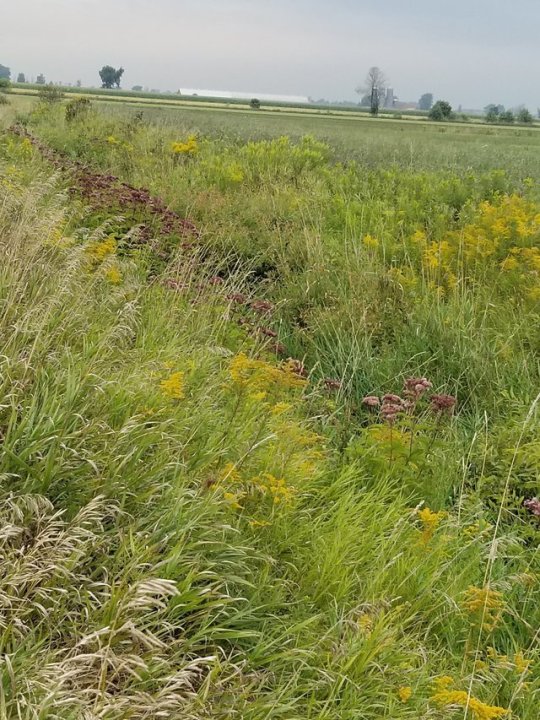

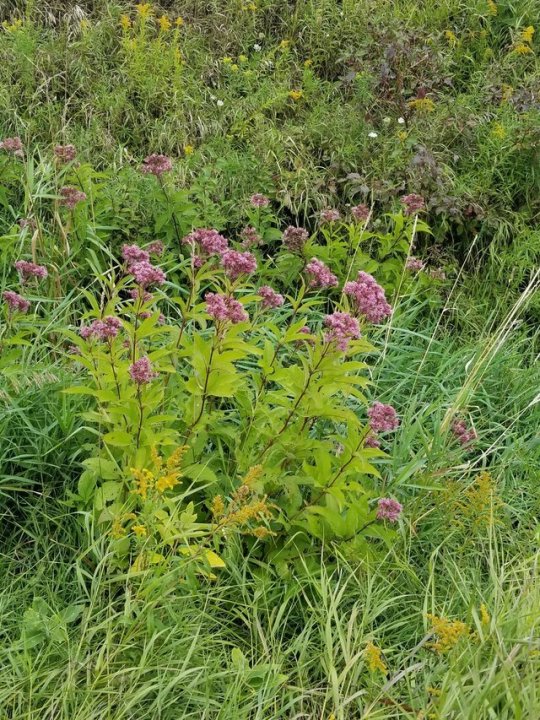
Despite the torture of stone-picking the fields since before Sept 4th I at least have gotten to check on the status of the Marsh Queen of wildflowers that shelters in the fields' ditch; Joe Pye weed (Eutrochium maculatum.. or E. purpureum??)
They've begun to beat at the goldenrods for ferocity. Plenty of seeds to come to ensure a few plants to add to the greenhouse stock.
#my post#plantblr#gardeners of tumblr#gardeners on tumblr#Eutrochium#Joe Pye weed#wildflower#flowers#Eutrochium maculatum#Eutrochium purpureum
3 notes
·
View notes
Photo

Spotted Joe Pye-weed (Eutrochium maculatum)
Pleasant Valley, WI, 6-29-17
#spotted joe-pye weed#eutrochium maculatum#flower#wildlflower#original photographers#photographers on tumblr#imiging#nature photography
15 notes
·
View notes
Photo

Eutrochium maculatum
Spotted Joe-Pye weed
17 notes
·
View notes
Text

I have 11 whole Eutrochium maculatum aka Spotted Joe Pye I grew from seed this winter. They sure grow into big Ole plants from tiny tiny seeds
20 notes
·
View notes
Photo

Solidago (Oligoneuron) riddellii: The taxonomists have this one in a tug of war, but I think ultimately the Oligoneurons (of which this is one) have been classified as Solidagos. Along with Riddell's goldenrod, S. rigida and S. ptarmicoides are perhaps the most refined of the goldenrods, the former two completely gardenworthy and distinctive in the genus. One reason I am using them as subjects in my goldenrod project. Working wonderfully with small and mid-size warm season grasses (Molinia, Sporobolus, Panicum, Calamagrostis and Andropogon), and a variety of late season perennials--fall Asters, (think laevis 'Blue Bird', cordifolia 'Little Carlow' and novaeangliae 'September Rubin'), Persicia amplexicaulis, Actea (Cimicfuga) ramosa, Sanguisorba officinalis, Eutrochium maculatum or rugosum 'Chocolate' and Helenium autumnale--Riddell's Goldenrod makes 1 ft wide x 3ft tall clumps topped by bright golden mounded panicles from late August into early October. A stand of these in the mid-garden (or right up front where their elegant foliar profile and erect carriage can be displayed to full effect) makes a bold and elegant statement in even the most refined garden designs.
6 notes
·
View notes
Text
flower combinations

Plants tagged in this photo:
Sedum (Hylotelephium spectabile 'Mr. Goodbud')
Sedum (Hylotelephium spectabile 'Herbstfreude')
False Chamomile (Boltonia asteroides var. latisquama Jim Crockett)
Hosta 'Sum and Substance'
Garden Phlox (Phlox paniculata Flame™ Coral)
Japanese Anemone (Eriocapitella hybrida 'Robustissima')
Staghorn Sumac (Rhus typhina Tiger Eyes®)
Anise Hyssop (Agastache 'Blue Fortune')
Panicle Hydrangea (Hydrangea paniculata Limelight™)
Panicle Hydrangea (Hydrangea paniculata 'Tardiva')
Anise Hyssop (Agastache 'Black Adder')
Stonecrop (Hylotelephium tatarinowii 'Mongolian Stardust')
Stonecrop (Hylotelephium telephium subsp. telephium 'Yellow Xenox')
Joe Pye Weed (Eutrochium maculatum 'Gateway')
source - garden.org
#flower combinations#plant combinations#garden combinations#gardens#flowers#colorful gardens#flowering plants combined
0 notes
Photo

7 Bee-Friendly Weeds You Should Keep Around
Bees
can’t survive without access to a variety of pollen- and nectar-rich blooms, but often, what we consider pesky, unwanted weeds are actually beneficial plants that attract hordes of happy bees. As an added benefit, many also draw butterflies and a variety of beneficial insects to your garden. The best thing we can do for bees is to put the hoe back in the shed, say goodbye to the toxic chemicals, and make peace with those bee-friendly weeds. Here are 7 common, easy-to-grow weeds that you should keep definitely around.
Dandelions
(
Taraxacum
spp.) – Although
dandelions
tend to get a bad rap, these weeds are actually quite beneficial to both us and the bees. Keep them around and this bee-friendly plant will bring in the pollinators galore. Plus, you can harvest the greens and puffy yellow flowers for yourself. They’re edible and nutritious.
Creeping charlie
(G
lechoma hederacea
) – The
creeping charlie weed
is rivaled only by dandelions in terms of its difficulty to control, but why go through the trouble. Bees love the small purple flowers and its scalloped foliage is attractive in the landscape too, earning its other name of ground ivy.
Creeping thyme
(
Thymus serpyllum
) – There are many
creeping thyme
varieties, and some are considered weedy plants because of their spreading capabilities. That being said, these plants provide a nice carpet of fragrant blooms that bees find quite enticing.
Bee balm
(
Monarda
spp.) – Most people love adding
bee balm
to their gardens even though in some places the plant is considered as nothing more than a pesky landscape weed. But the plant’s name says it all and bees find the blooms nearly irresistible.
Wild geranium
(
Geranium maculatum
) – Typically found growing along roadsides or woodlands, this hardy geranium can also make itself right at home in the garden. Also called
cranesbill geranium
, the plant may produce blooms of pink to purple with some types that are white.
Joe pye weed
(
Eutrochium
spp.) – Why would you grow this weed in the landscape? Why not would be more like it, as the pinkish-purple flowers of
joe-pye weed
attract not only bees but a multitude of butterflies with its sweet nectar.
Anise hyssop
(
Agastache foeniculum
) – Not sure why anyone would consider this plant a weed, as
anise hyssop
is anything but, with the exception to its self-seeding which can be remedies with pruning or deadheading. The bees will appreciate its presence in the garden almost as much as you since the plant makes a useful herb and flavorful tea.
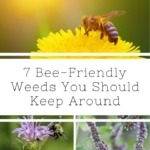
This is is a syndicated post. Read the original at blog.gardeningknowhow.com
viahttps://creativegardens123.com/7-bee-friendly-weeds-you-should-keep-around/
0 notes
Text
Insect In Close

Monarch Butterfly (Danaus Plexippus) on an Eutrochium maculatum (Spotted joe-pye weed) flower
©2022 Ken Oliver
#original photography on tumblr#photography#nature#photographers on tumblr#nature photography#original photographers on tumblr#original photographers#wildlife#butterfly#monarch#insect#macro
7 notes
·
View notes
Photo



Late season phytomimicry of the Carolina mantis.
female Stagmomantis carolina, with brood on a Eutrochium maculatum
In Ohio we get 3 mantis, 1 true mantis from China that's brown and green, and one European mantis that’s brown. Both of which are huge and have become the commonplace species. This Mantis, is significantly smaller and has some gorgeous phytocamo.
18 notes
·
View notes
Photo



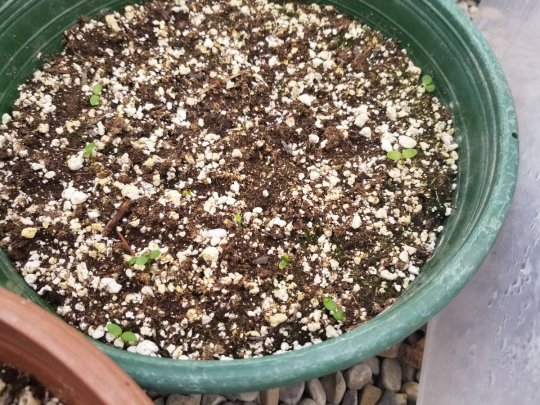
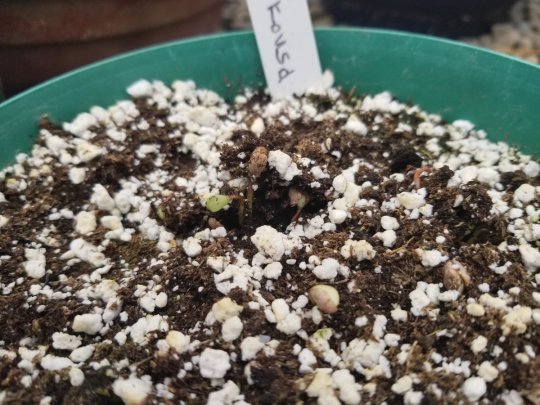

Greenhouse autumn-sown seeds germinating May 1st;
Symphyotrichum novae-angliae, Ratibida pinnata, Eutrochium maculatum, Stylophorum diphyllum, Cornus kousa, Penstemon hirsutus.
2 notes
·
View notes
Photo

Spotted Joe-pye Weed
Eutrochium maculatum
Shea Prarie, WI
28 July 2019
#spotted joe-pye weed#wildflower#original photographers#photographers on tumblr#imiging#nature photography
30 notes
·
View notes